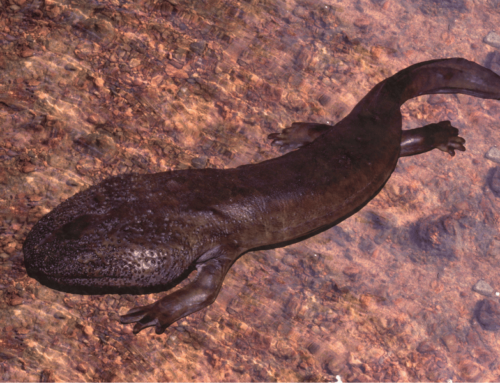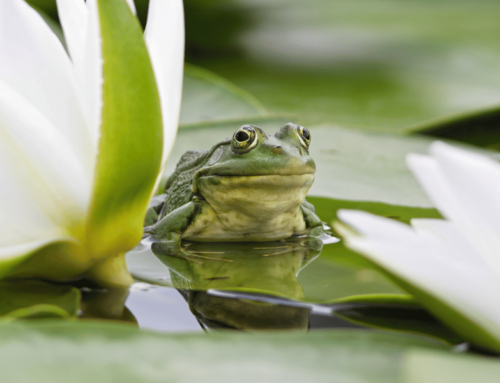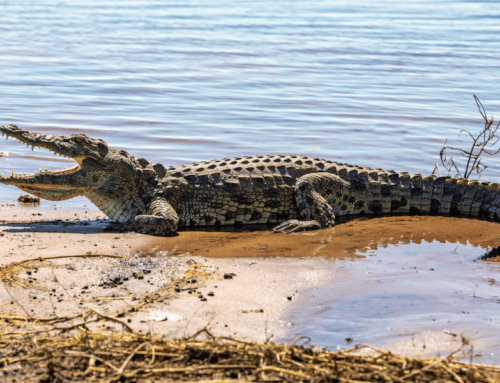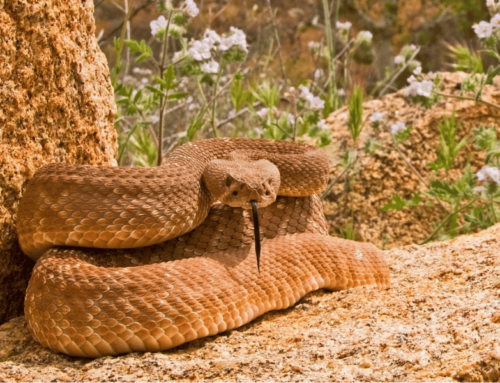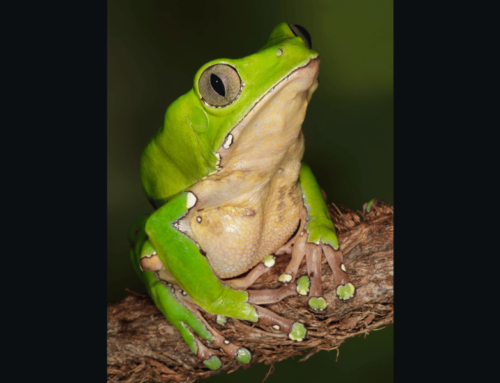
We are all aware of the great herping opportunities available to us on land. But people shouldn’t ignore all of the great reptile and amphibians you can find in the water. The ocean holds 90% of all living space for life on earth. There are reptiles that can only be found in the ocean and not going into the ocean means you’ll never get a chance to see them. The rest of this blog will give you lots of amazing reptiles to add to your herping life list.
Note: Many of the animals on this list are dangerous to interact with. Don’t approach or interact with any wildlife unless you consult a local expert.
This blog is all about marine reptiles for your herping list.
Herping for Marine Reptiles
1. Saltwater Crocodile

The saltwater crocodile is not only the biggest aquatic reptile but also the biggest extant reptile overall. They can reach up to 20 feet (6 meters) in length and weigh up to 3300 lbs. (1500 kg.). It’s an ambush predator that is well-equipped to take down large prey.
You can find this crocodile along the coasts in northern Australia, the Philippines, Indonesia and even to the eastern coast of India. As their name suggests, these crocodiles take to the ocean much more than any other crocodile species.
The saltwater crocodile is an aggressive predator and should only be observed from a distance and on land. They can spend large amounts of times not moving and usually hunt at night. Watching them in the daytime is therefore safer.
Reptile enthusiasts can’t afford to ignore the biggest and most impressive reptile alive today!
2. Marine Iguana

Possibly the most well-known and famous of all iguanas, (maybe behind the green iguana), the marine iguana is a lizard that is well-adapted to swimming in the ocean. When they’re not foraging for algae, they can be found on land, where they bask in the sun. The majority of their time is spent on land. Unlike most other lizards, they live in large colonies.
There are several different subspecies of the marine iguana and their coloration can vary dramatically. The following pictures can give you an idea of how different they can look.

To see this animal, you have to travel to the Galapagos Islands. This is the only place you can see them in their natural habitat. You can observe them swimming offshore, in search of food, where they swim around in a snake-like fashion.
The marine iguana is currently the only known marine lizard species. It makes a great addition for your herping life list!
3. Leatherback Sea Turtle

The ocean not only has the largest crocodile but the largest turtle as well. The leatherback sea turtle is the largest extant turtle in the world.
Besides its enormous size, the leatherback sea turtle can be identified by its coloration. This turtle has dark, blackish coloration throughout its body.
This turtle is cosmopolitan in its range. It can be found from in any of the tropical oceans, along with colder waters by Norway and New Zealand. It has the most widespread distribution of any sea turtle.
The leatherback sea turtle is mostly an open ocean turtle. When looking for it, get away from the shore. Since their primary prey is jellyfish, locations that are hospitable to jellyfish are likely places to see leatherbacks.
4. Loggerhead Sea Turtle

Here we have another great sea turtle to observe in your upcoming herping adventures. The Loggerhead Sea turtle gets its name from the size of its head.
It’s the largest hard-shelled turtle in the world and is bigger than any terrestrial turtle. Its impressive size makes it another great turtle to see in the wild. Their appearance is predominantly brown, with white on their fins and heads.
The Loggerhead Sea turtle can be found throughout the Indian, Atlantic and Pacific Ocean, along with the Mediterranean Sea.
When looking for this turtle, know that they don’t visit the shore as much as other marine reptiles. They spend the vast majority of their time in the open ocean or in shallow water. If you see one that has emerged from the water, it’s usually for nesting. Like lots of other turtles they are diurnal.
5. Yellow Lipped Sea Krait

Venomous snakes are not only on land! There are venomous snakes swimming in the ocean as well. This snake, the yellow-lipped sea krait is among the most venomous. Thankfully, it is not known to be aggressive to people. Bites usually occur in self-defense.
This snake remains small, not getting longer than 34 inches (86 centimeters). Like its name suggests, the lip of the snake is yellow. The rest of its body alternates between blue and black stripes. Over time, this snake has evolved a paddle-shaped tail to make swimming easier.
This snake is found in the Indo-pacific parts of the ocean. It lives in the Bay of Bengal and the waters of the Philippines, Taiwan and throughout Indonesia. This snake is common on the island of Fiji.
In the water, you can find it off the coast, looking for eels, their favorite prey. You can find them in the open ocean, shallow waters, reefs and mangrove areas. Older individuals can be found further away from the coast. Adults also spend a fair amount of time on land.
6. Olive Ridley Sea Turtle

The Olive Ridley Sea Turtle is the most abundant type of marine turtle. That doesn’t mean that it isn’t a great reptile to observe for your next herping adventure.
This turtle is named for the olive coloration on its carapace. In appearance, they take on the typical appearance of other well-known sea turtles like the green sea turtle.
Their range includes most of the world except for the eastern coastline of central and North America, the coastlines of Europe and are rarer the further north or south you go.
The olive ridley sea turtle is usually found close to shore. When looking for this turtle, don’t go far away from shore as they aren’t usually found more than 15 kilometers (9.3 miles) from shore. They are also usually in shallower water.
7. The American Crocodile

Here we have another crocodile that likes the ocean. Like the saltwater crocodile, they have adapted to saltwater more than freshwater. They are the only native crocodile species you can see in the United States.
The American crocodile can be found in freshwater but has a preference for salt water. You can look for them in brackish waters near the coast or in the ocean. They are also found in brackish/saline lakes, mangrove swamps, river mouths and in the ocean. Their range extends from the south region of Florida, the coasts of central America, the northwest parts of South America and throughout the Caribbean.
This crocodile is less aggressive than the saltwater crocodile and is known for avoiding people as much as possible. However, this doesn’t mean that they are safe to get close to. Keep a safe distance just to be safe.
Finding the American crocodile inland will give you the chance to see something you can’t see anywhere else in the world: crocodiles and alligators living together. American crocodiles and the American alligators will often coexist in the same surface waters. Although the American alligator prefers fresher water.
Bonus: A Totally New Species

I’m putting this one on here even though it’s not the most likely thing to happen. It is fun to think about and stranger things have happened! The truth is, that the ocean is enormous. The ocean, along with extensive river systems around the world could easily be hiding new species.
New species are discovered all the time. In just two years, 380 new species were discovered in the Mekong region of Asia. So, finding a new reptile yourself wouldn’t be a strange anomaly.
Another possibility is the rediscovery of a species which was declared extinct. This has happened more than you might think. For example, the Bermuda petrel was believed extinct for three centuries. This bird is a sea bird and unlike lots of other species, it doesn’t have lots of places to hide. There’s no thick tree growth in which they can remain concealed like inland species.
It’s almost a guaranteed certainty that the ocean is hiding new species to discover. You might be the person that gets to discover and name a new reptile. And you get to be the one who names it!
I’m not saying this is the reason you should go herping for marine reptiles, but it’s definitely another reason to get in the water. The ocean remains mysterious to this day, even with all of our new technology.
Conclusion:
Herping is usually considered a land-based activity, where people walk around and turn over rocks. However, you shouldn’t ignore the fact that the ocean holds dozens of interesting species of reptiles that can be observed in the wild.
If you were looking for a reason to become a certified scuba diver, then these amazing reptiles should be more than enough reason.
